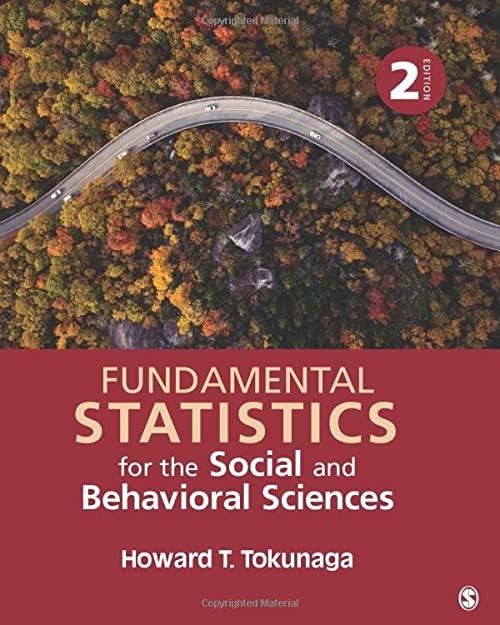In the department store example, imagine that the sample had been N = 4 rather than N
Question:
In the department store example, imagine that the sample had been N = 4 rather than N = 25 (for the sake of this example, keep the sample mean and standard deviation at 18.50 and 2.25, respectively).
a. State the null and alternative hypotheses (H0 and H1) (allow for the possibility that the average age may be younger than 16).
IV: Cellular phone use; DV: Number of traffic accidents
b. Example: Determine the number of traffic accidents each person has experienced in the past year.
c. Example of experimental: Use a driving simulation with the “driver” talking on a phone and measure the number of potential driving mistakes or accidents.
Example of nonexperimental: Take a survey of the number of accidents people have been in and whether or not they were using a phone during the accident.
b. Make a decision about the null hypothesis.
(1) Calculate the degrees of freedom (df ).
(2) Set alpha (α), identify the critical values, and state a decision rule. Why is the decision rule different than when N = 25?
(3) Calculate a statistic: t-test for one mean. Why is it a different value than when N = 25?
(4) Make a decision whether to reject the null hypothesis.
(5) Determine the level of significance.
c. Draw a conclusion from the analysis.
d. What are the implications of this analysis for the store manager’s claim?
Step by Step Answer:

Fundamental Statistics For The Social And Behavioral Sciences
ISBN: 9781506377476
2nd Edition
Authors: Howard T Tokunaga




